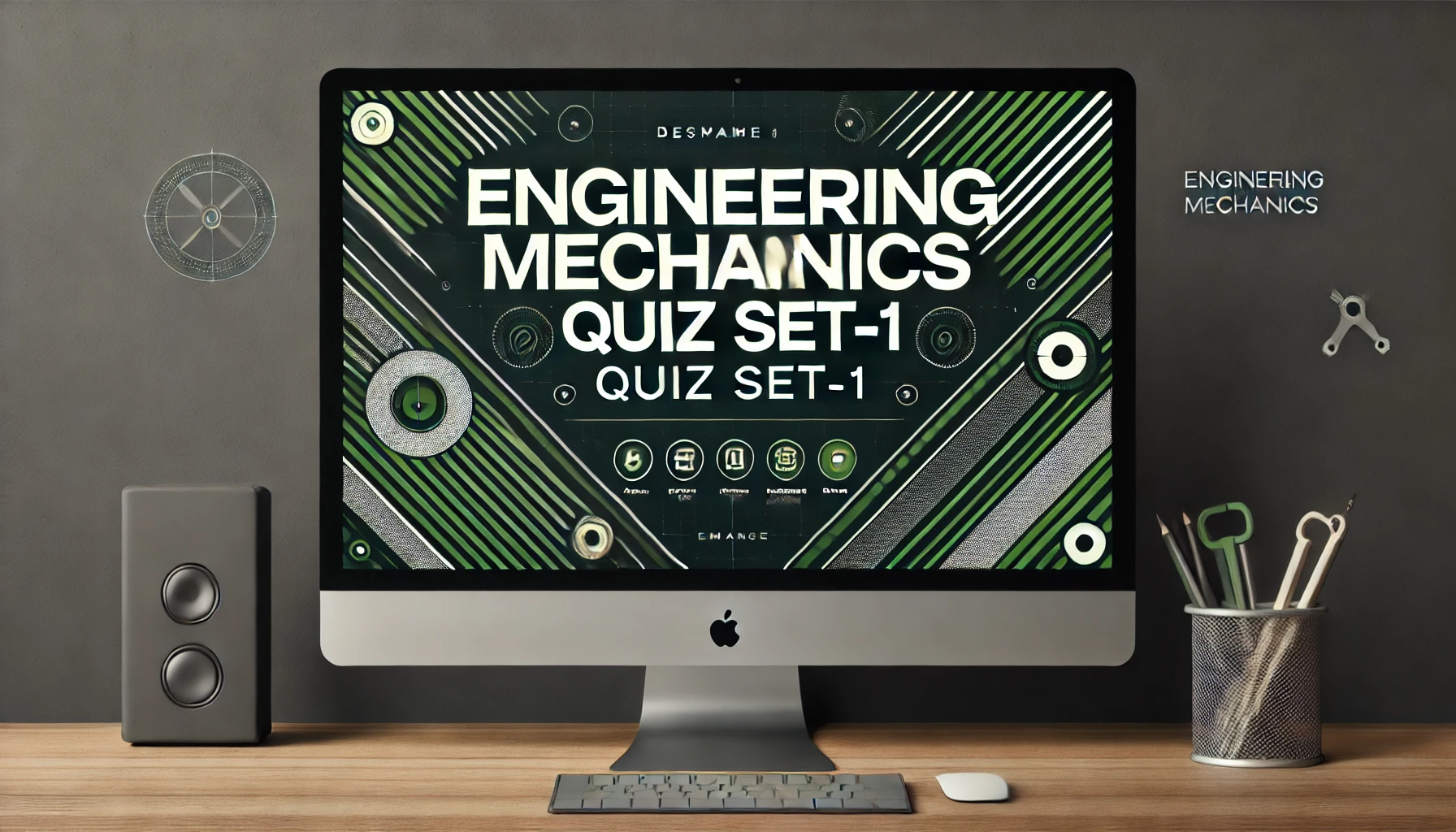Welcome to “Engineering Mechanics Quiz Set-1 [2025]”!
In this blog, we’ve curated 50+ engaging multiple-choice questions covering both fundamental and advanced concepts of engineering mechanics. “Engineering Mechanics Quiz Set-1 [2025]” is designed to help you strengthen your basics, test your knowledge, and develop a deeper understanding of the principles and applications of mechanics.
Whether you’re a mechanical engineering student, a practicing engineer, or preparing for competitive exams, this quiz is the perfect resource to sharpen your skills and enhance your expertise in engineering mechanics.
Let’s dive into the “Engineering Mechanics Quiz Set-1 [2025]” and get started!
What is Engineering Mechanics?
Engineering Mechanics is a branch of applied science that deals with the study of forces and their effects on bodies at rest or in motion. It serves as the foundation for designing and analyzing mechanical systems, structures, and machines by applying principles of physics and mathematics.
Types of Engineering Mechanics:
- Statics: Focuses on bodies at rest and in equilibrium under the action of forces.
- Dynamics: Deals with bodies in motion and includes:
- Kinematics: Study of motion without considering forces.
- Kinetics: Study of motion considering forces and their effects.
Applications:
- Design of buildings, bridges, and vehicles.
- Analysis of machine components.
- Predicting the behavior of structures under various loads.
- Solving real-world problems in mechanical, civil, and aerospace engineering.
See Also: Engineering Survey MCQ Test-1
